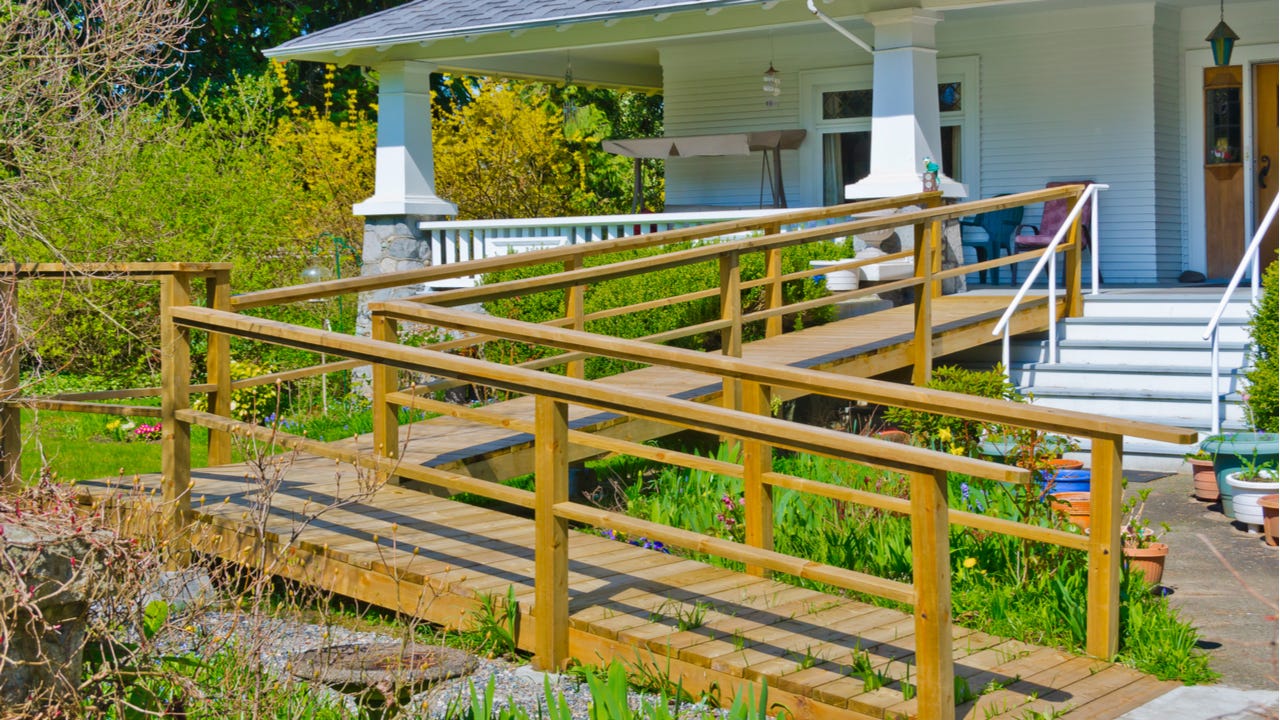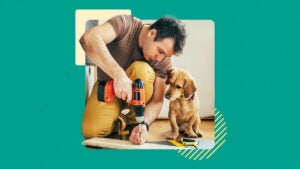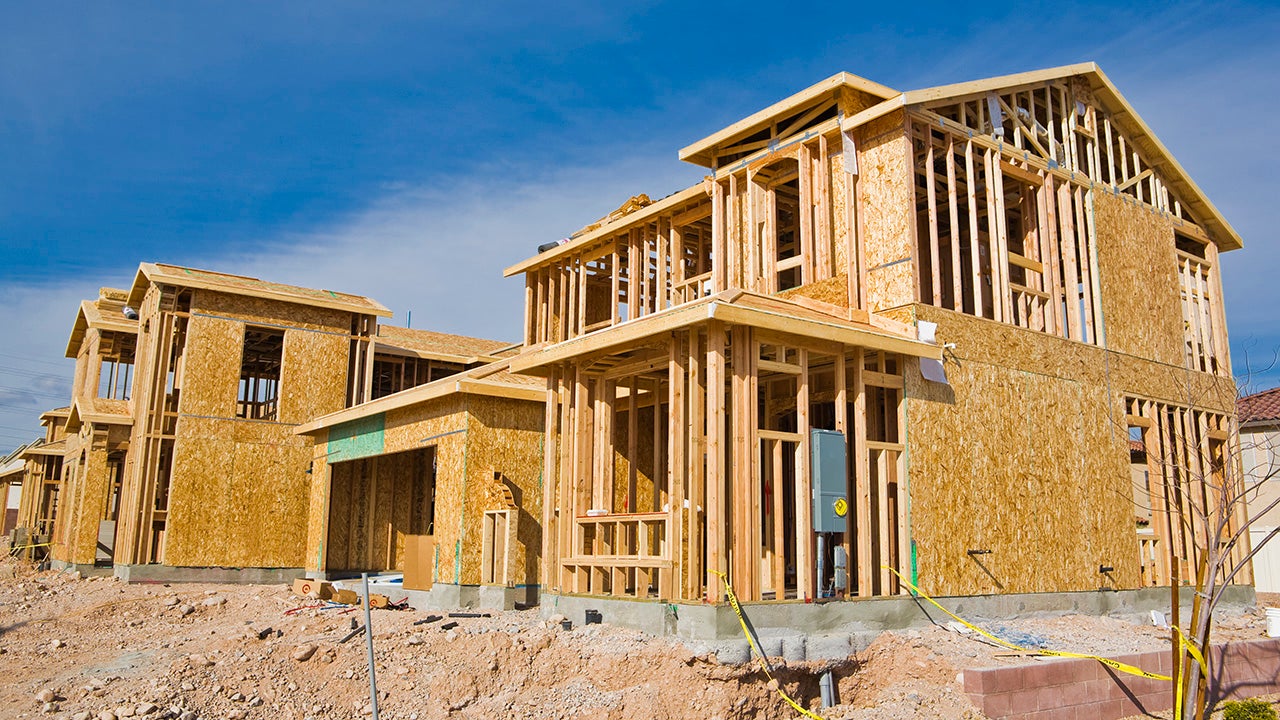Home improvements for people with disabilities

Key takeaways
- Home modifications are often required to better accommodate people with disabilities and allow for easier access and use.
- Among the enhancements worth considering are widening doorways and halls, replacing steps with ramps, installing a stair lift, removing barriers in the bathroom, smoothing out floors and adding brighter lighting.
- Several resources are available to help the disabled fund home modifications, including federal assistance and grants, aid from private nonprofits and home equity loans.
The task of outfitting a home for a disabled person can seem daunting. And certainly, making these home modifications often does take time and cost money. But they can significantly improve quality of life for people with physical challenges and sensory issues. And even small changes in the home of a disabled or aging person can make a big difference in everyday life.
“Investing in home improvements that make spaces more accessible is worthwhile, especially for those with disabled family members and anyone who wants to age in place comfortably. Also, anyone living in multigenerational households – where the needs of both young and old need to be considered – as well as those anticipating future mobility challenges, are great candidates for accessibility improvements,” says Charlotte Granville, a home remodeling specialist with Fixr.com. “Additionally, making your home accessible can make it more appealing to a wider range of buyers when it comes time to sell, which could potentially increase your home’s value.”
Here’s the lowdown on home improvements for people with disabilities, and the expected costs for many of these projects.
Ways to make a home more accessible
Renovations geared toward the disabled, the physically challenged and the elderly are officially known as home modifications. They can be as prominent as an outdoor ramp or as subtle as smooth flooring; as large as a curbless shower or as small as a levered faucet handle.
Here are some common home modifications that can enhance accessibility within a residence.
Widen doorways and halls
To make space for wheelchairs and walkers, some doorways may need to be enlarged. If you can’t afford to widen every doorway, consider expanding the most used ones.
“Wider doorways and halls can help wheelchair users access and navigate your home. At a minimum, doorways should be 32 inches wide and halls should be 36 inches wide,” suggests Mallory Micetich, a home expert with Angi. “Depending on the layout of your home, you may need to install a wider door frame and break down hallway walls that are too narrow.”
Replace steps with ramps
A ramp allows for easy entry into and within the house and eliminates steps that can be difficult for those in wheelchairs, who use walkers or who have walking issues in general.
“Replacing steps with a ramp can provide a smooth, gradual incline for individuals with mobility challenges, allowing them to enter and exit the home without the need to negotiate stairs,” explains Mariya Snisar, head of interior design for Renowell, an Ontario, Canada-based home design and renovation firm.
Ensure there is access to a bathroom and bedroom on the first floor
It’s difficult for those with disabilities to climb stairs to reach a bedroom and/or bathroom. Aim to add these essential living spaces on the main level (first floor).
“This guarantees effortless access to essential areas of the home, promoting independence and convenience. Depending on your existing layout, this may involve creating a new bedroom and bathroom or modifying existing spaces to meet accessibility requirements,” Snisar notes.
Install a stair lift
If steps are challenging for a resident and it’s impossible to eliminate the need to go upstairs, consider getting an electric stair lift for a safe way to travel between floors. “Installing an electric stair lift provides access to those with limited mobility to any areas of the home where a ramp would not be suitable to install,” adds Granville.
Remove bathroom barriers
Grabbing a doorknob or conventional tap can be difficult for someone with arthritis or any disability that affects dexterity. Lever handles or touchless faucets are much easier to use. And roll-in showers offer autonomy in bathing for the wheelchair-bound. “You can also make your bathroom more accessible by converting your bathtub to a walk-in tub or installing a wheelchair-accessible shower,” continues Micetich.
Smooth out flooring
Anyone with trouble walking will need flooring that is slip-resistant and softer but smooth. You’ll also want to avoid rugs as they can get caught in wheelchairs and walkers, causing falls.
Change doors
Installing pocket doors means eliminating a door and a hinge that could be in the way when opened. “This creates a wider opening and eliminates the need for swing space, maximizing accessibility for individuals with mobility aids,” says Snisar.
Add brighter lighting
Aging seniors or anyone with vision impairments may have difficulty seeing well in their home with the typical lighting. Brighter lights can be a simple fix for better vision in the home.
“This enhances visibility, making it seamless to navigate and perform tasks safely,” Snisar continues. “You’ll need to install extra or brighter light fixtures in key areas of the home for even illumination throughout.”
What do home modifications for the physically disabled cost?
Curious how much some of these enhancements will tally? Here are some reliable estimates, per Angi’s Michetich and Fixr’s Granville.
| Home Modification | Average Cost (materials and professional installation) |
|---|---|
| Ramps | $1,000 – $4,000 |
| Pocket doors | $1,050 per door |
| Lever handles | $150 – $350 per knob |
| Wide doorways | $300 – $2,500 per doorway |
| Non-slip flooring | $3 – $22 per square foot |
| Brighter lighting | $3 per bulb; $550 per indoor fixture |
| Smooth exterior walkways | $1,800 |
| Phone access | $108 – $269 per jack |
| Electric stairlift | $1,500 – $15,000 |
| Roll-in shower | Starting at $2,000 – $7,500 |
Home modifications for children with disabilities
Children with disabilities may also require home renovations for a calmer and more accessible environment.
The following table outlines typical home modifications for children with disabilities (particularly autism spectrum disorder or a sensory processing disorder), along with associated costs, courtesy of Granville and Micetich.
| Home Modification | Purpose | Average Cost (materials and professional installation) |
|---|---|---|
| Lighting for sensory issues | Sensory processing disorder (SPD) means you are either overly sensitive to outside stimuli or you are less sensitive to outside stimuli. Either way, SPD can mean regular lighting can cause problems. Noises from light fixtures can also bother a child with autism spectrum disorder (ASD). Consider changing out light bulbs or fixtures if your current lighting causes issues for your child. | $3 per bulb |
| Soundproofing | A quiet space is highly recommended for children with both ASD and SPD. Soundproofing a room or your whole house can be helpful. Since children with ASD can also be loud sometimes, soundproofing may also help be considerate of neighbors. | $1,000 – $2,700 per room depending on the size of the room and the materials used |
| Gates and fencing | Peace of mind for parents of children with disabilities is just as important as creating a calm and welcoming space for the child. Having the proper gates and fences to keep your child safe can help you feel calmer as a parent. | $2,300 per gate, depending on size and materials |
| Hardwood flooring | For kids with sensory issues, carpet can cause many problems with smell. Carpet holds odors and stains that may make life more difficult for children with these types of disabilities. Consider switching to hardwood flooring to get rid of lingering odors. | $14 – $32 per square foot, installed |
| Monitoring devices | If you worry about being able to watch your disabled child at all times, it may be a good idea to invest in a security system or monitoring device that will allow you to see your child even when you are not home or are in another room. You could also install an alert system to go off when certain gates or doors are opened. | $1,400 – $4,500 for a security system plus $600 for four security cameras |
Funding home modifications: Grants, loans and other assistance
The cost can look considerable, but there are many funding options to consider when making home improvements for the disabled. Both federal and local governments, as well as non-profits, offer assistance for these types of renovations in many cases.
Federal assistance and tax benefits
A variety of federal assistance resources and tax credits are available to the disabled and elderly. Find out if you qualify for any of these options:
- Social Security Disability Insurance (SSDI). This provides financial assistance to individuals with disabilities who are unable to work due to a medical condition. Work history and the severity of your disability will determine eligibility. To qualify for SSDI, you must have a qualifying disability and have worked and paid Social Security taxes for a certain number of years.
- Supplemental Security Income (SSI). This provides financial assistance to low-income individuals with disabilities, including the elderly. To be eligible, you must have limited income and resources and meet the SSA’s criteria for disability. Some factors considered include age, disability or blindness.
- Medicare. This federal health insurance program, primarily for individuals aged 65 and older, also covers certain disabled individuals under age 65. To qualify based on disability, you must have received SSDI benefits for at least 24 months or have certain specific disabilities.
- Tax benefits. According to the IRS, if you have a disability you may be eligible for certain tax deductions (including an increased standard deduction), income exclusions and tax credits. Those eligible include taxpayers who are elderly, legally blind or disabled. Some renovations may also be deductible as medical expenses.
Disabled veterans’ home modifications
Veterans have access to a range of specialized funding options to cover the costs of necessary home modifications due to their disabilities. They can explore various government-funded programs, including:
- Specially Adapted Housing (SAH) grant. This program provides grants to service members with severe injuries, allowing them to purchase, build or renovate a home tailored to their specific needs. As of now, veterans may be eligible for grants of up to $109,986.
- Special Housing Adaptation (SHA) grants. Another option for disabled veterans, the SHA grant currently offers up to $22,036. This grant offers assistance to veterans looking to modify or purchase a permanent home that enables them to maintain independent living.
- VA cash-out refinance home loans. If you don’t qualify for either of the above grants, consider a VA cash-out refinance home loan. You can replace any current mortgages with this refi if you qualify. It comes with exceptionally generous provisions, including no down payment, and it may help you get some extra cash to pay for the renovations needed.
Private assistance
Funding may be available at a local level too. Along with city or state aid, “many private foundations offer grants specifically for home improvements aimed at enhancing accessibility and accommodating the needs of individuals with disabilities,” says Snisar. Freegrantsfordisabled.org locates grants in all 50 states and several metropolitan areas. USA.gov compiles a list of programs that may provide financial assistance for your home renovation needs, and also delineates individuals’ rights under the Americans with Disabilities Act.
Federal legislation safeguards the rights of individuals with disabilities, ensuring accessibility options for those who are renting their homes. When seeking financial support for your home renovations, be aware that the Fair Housing Act prohibits discrimination based on disability in housing-related activities. If you are a renter, this law mandates that your landlord must permit reasonable modifications to your residence, enabling you to make it accessible to accommodate your disability. There are also advocacy organizations that can help you fight for your right to assistance if you have been denied, like the National Disability Rights Network.
Loans
If you have researched national and local options and still need funding, consider financing. Some options include:
Home equity loans. A home equity loan, often referred to as a second mortgage, is a fixed-rate lump sum; the amount you can borrow is based on the amount of outright ownership (vs. mortgaged amount) you’ve built up in your residence. The interest can be tax-deductible if the funds are used for home renovations, like modifications.
HELOCs. A home equity line of credit (HELOC) functions as a flexible credit line with a variable interest rate, much like a credit card. It permits you to borrow funds as needed over a predetermined period, repaying and then borrowing again, if desired. As with the home equity loan, your credit line is based on the value of your ownership stake, and your house acts as collateral for the debt.
Home improvement personal loans. A home improvement loan is a type of personal loan specifically designed to fund emergency repairs or renovation projects. These may include anything from fixing a leaky roof to a full kitchen remodel. These loans are generally unsecured, which means that your eligibility is determined based on your credit score and income.
Reverse mortgages. With a reverse mortgage, available to homeowners aged 62 and up, the lender provides regular payments to the homeowner, explaining the name “reverse.” Importantly, the money received from a reverse mortgage is not subject to taxation. However, the loan must be repaid when the borrower passes away, permanently relocates, or sells the property; otherwise, it belongs to the lender.
Final word on home improvements for people with disabilities
Before embarking on any home renovations to accommodate individuals with disabilities or the elderly, begin by evaluating the specific needs of the individual. In some cases, seeking an assessment from a contractor, interior designer (especially those with expertise in home modifications), or an occupational therapist (OT) can be valuable.
You may also like

Low-cost ways to make your home more energy-efficient

How to get a home improvement loan in 6 simple steps




